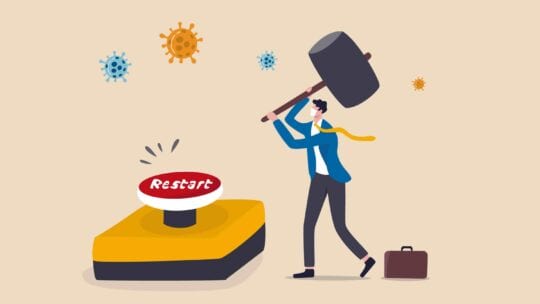
As 2021 approaches and the US begins its rollout of COVID-19 vaccines, the promise of safety and stability finally seem within reach. In fact, earlier this month, UCLA economists issued an optimistic forecast predicting that after “a gloomy COVID winter,” the country will experience “an exuberant vaccine spring” and robust growth for some years.
But while exuberant, this Great Restart may bring growing pains:
- Brands will need to kowtow to evolved expectations of consumers.
- Companies will seek help adjusting to a changed corporate landscape.
- Employees will require support as they transition to new ways of working.
Successful communication amid this highly sensitive environment will require more authenticity, empathy and innovation to meet new and evolved expectations–and by design, an uptick in the following:
Personalized, Highly Targeted Consumer Experiences
Amid rapid digitalization and heightened consumer screen time, brands are employing more personalized virtual experiences to vie for customers’ attention and remain competitive. We’ve seen profound examples of this in the wellness space as housebound consumers adapt to life without gyms, fitness studios or easily accessible doctors’ offices–fueling the rise of telemedicine, at-home fitness and digital therapy as consumers take a more hands-on role in their well-being.
In fact, a recent McKinsey survey found that consumer adoption of telehealth has jumped from 11 to 46 percent this year; much the same, Peloton sales rose 66 percent since the start of the pandemic. Understanding that consumer behavior as a result of this shared experience won’t ever truly be the same, businesses need to build on data and analytics to develop more personalized content and storytelling, integrated with multichannel outreach and increased engagement and experimentation.
Continuous Innovation to Meet Changing Consumer Needs
For a lot of people, the COVID-19 pandemic provided an opportunity to re-evaluate and adjust their lifestyles–using newfound time at home to start a new skill, make a career transition, or update their homes.
In fact, LinkedIn reported a 3x increase in time spent learning, while smart home devices are exploding and video doorbells abound. Amid these dramatic changes in lifestyle, companies also will need to innovate to meet their product promise and keep customers loyal.
John Chambers, CEO of JC2 Ventures and former CEO of Cisco, has long said: We compete against market transitions, not competitors. This will be particularly true in 2021 amid a shifting post-pandemic landscape, and companies will need to think on their feet to keep pace.
A Reimagining of Company Culture, Connection and Purpose
After months of working remotely, there is a danger of company culture losing its strength. On top of remote work, employees face stress in continued waves of change. Therefore, communication that encourages engagement is crucial; employees need to feel inspired and connected.
Especially after months of pandemic lockdowns, leadership and culture are crucial to enabling people to excel and work collaboratively. As Sanofi CEO Paul Hudson comments, “We want to make sure that everybody feels they can express themselves and be the best version of themselves.”
To energize employees, a reorientation on shared values and purpose has become a powerful tool. As Best Buy CEO Corey Barry recently said, “You unleash massive potential when you tie your employees’ personal purpose to the purpose of the company,” and as such we will undoubtedly see this take hold at even greater scale in 2021.
These are trends to watch as we hopefully beat back COVID-19 with new vaccines in the year ahead.
Kathy Bloomgarden is CEO of Ruder Finn
